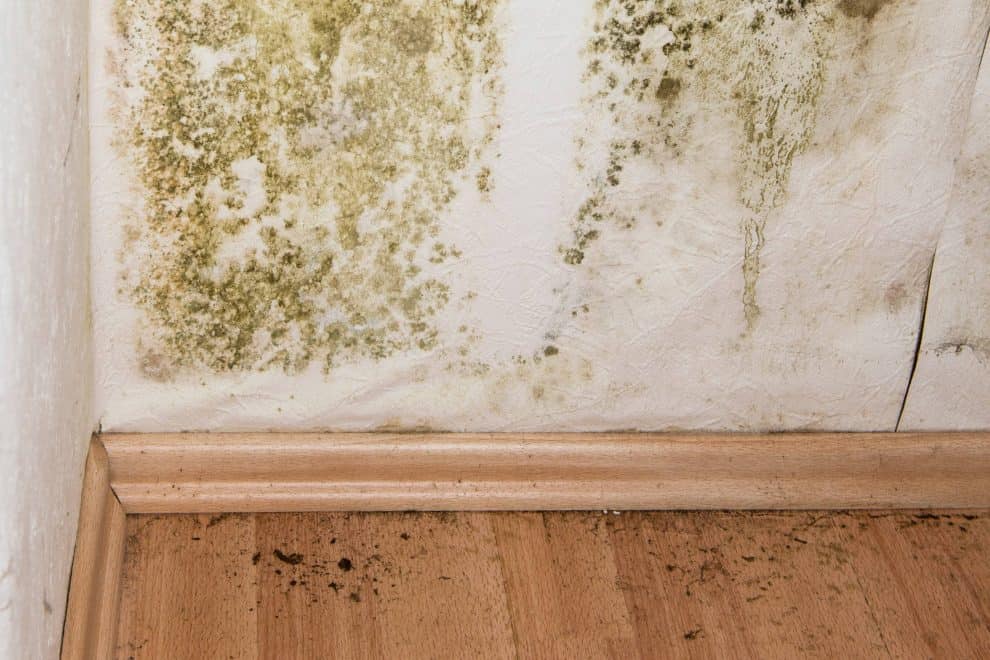In the realm of home hazards, damp and mould are often dismissed as mere annoyances.
However, recent revelations in the UK media suggest that the consequences of residing in a mould-infested environment may be more severe than we once thought.
The Silent Threat: Can Living in a Mouldy Home Actually Kill You? Unravelling the Dangers and Solutions
As an expert in the field of damp proofing, I aim to delve into the unsettling question: Can living in a mouldy home actually kill you?
As extreme as that question is, with the amount of mouldy homes here in the UK I feel that it is an important question to answer, if only for your peace of mind.
The Hidden Perils:
Recent reports in reputable UK media outlets have shed light on the potential life-threatening consequences of prolonged exposure to mould in our living spaces.
While it’s crucial to note that not everyone faces an imminent risk, individuals with underlying health conditions may find themselves at the mercy of this silent threat.
The toxic nature of certain mould species, such as Stachybotrys chartarum, commonly known as black mould, has been linked to severe health complications.
Health Implications:
Living in a mouldy environment can exacerbate respiratory issues, trigger allergies, and, in extreme cases, lead to fatal outcomes.
The UK media has reported cases where individuals with compromised immune systems or pre-existing respiratory conditions experienced worsened symptoms when exposed to mould. The insidious nature of these microscopic spores makes it imperative to address the issue promptly.
Credible Sources and Studies:
Citing recent studies and expert opinions from renowned UK publications, it becomes evident that the potential dangers of mould extend beyond surface-level concerns.
A report by The Guardian highlighted a study conducted by Imperial College London, indicating a correlation between damp homes and an increased risk of respiratory problems.
Additionally, The Independent reported on cases where individuals with weakened immune systems faced life-threatening consequences due to mould exposure.
The Vulnerable Population:
It is crucial to recognize that not everyone is equally susceptible to the perils of mould.
Those with compromised immune systems, respiratory conditions such as asthma or chronic obstructive pulmonary disease (COPD), and individuals with allergies may be more prone to the adverse effects of mould exposure.
The UK media has reported instances where seemingly harmless dampness in homes proved fatal for vulnerable individuals.
Understanding the Threat:
To comprehend the danger posed by mould, it is essential to acknowledge its ability to release mycotoxins into the air.
Mycotoxins are toxic substances produced by certain mould species, and when inhaled or come into contact with the skin, they can lead to a range of health issues.
While fatalities due to mould exposure are rare, the potential for severe health complications cannot be ignored.
Preventing and Addressing the Issue:
The fight against mould begins with understanding its root causes and implementing effective damp proofing measures.
As an expert in the field, I recommend a proactive approach to tackle dampness and mould in homes.
Regular inspections, prompt repairs of leaks, adequate ventilation, and maintaining optimal indoor humidity levels are essential preventive measures.

It is important to note that damp is WATER.
It is water getting into places it should not ever be.
If your house has black mould on the walls, it is more than likely to be caused by poor weatherproofing of your exterior walls.
If the walls of your house outside are porous, they will act like a sponge once the rain comes, and will soak into the wall, and then into your house.
Mould is an organic thing, like a plant, it needs water, amongst other things, to grow. It spreads by releasing spores into the air in the room. Do not take these lightly, they are poisonous and will harm your health.
The best way to cure this issue is a job than can be done, by ourselves, in under a week and involves the spray application of a weatherproof wall coating to the outside walls.
A quotation for this kind of work is free and without obligation to buy (We do not use salesmen)
This exterior wall coating system permanently cures all instances of damp, plus has the added bonus of making the exterior of the house look its best, for many years to come.

Recent features in The Times have emphasized the importance of addressing damp and mould issues promptly.
The article pointed out that persistent dampness can weaken the structure of a building and decrease its value.
Moreover, the long-term health implications of living in a mouldy home can be devastating, especially for those with underlying health conditions.
Damp Proofing Solutions:
Effective damp proofing involves identifying and eliminating the source of moisture.
The UK media has featured success stories where homeowners tackled mould problems head-on by investing in professional damp proofing services.
These services often include the installation of damp proof courses, improved ventilation systems, and the removal of existing mould infestations via exterior textured weatherproof wall coatings.
Experts quoted in The Telegraph have emphasized the importance of seeking professional help for severe mould issues.
They underscored that DIY solutions might not be sufficient in cases of extensive mould growth.
Professional damp proofing services not only address existing problems but also provide long-term solutions to prevent future outbreaks.
If you discover a damp patch in the house do not be tempted to think that you can solve the issue internally, because you cannot cure damp from inside, it has to be done OUTSIDE the house, which is where the source of damp is coming from.
Conclusion:
While the notion of a mouldy home proving fatal may sound alarmist, recent reports from credible UK media sources underscore the importance of taking damp and mould seriously.
There have been several high profile cases of people losing their lives from becoming gravely ill due to living in mouldy conditions. These are often linked to social housing or dodgy landlords.
The health implications, especially for vulnerable individuals, cannot be overlooked.
As an expert in the field of damp proofing, I urge homeowners to be proactive in addressing dampness, investing in professional services when needed, and creating a healthy living environment for themselves and their loved ones.
The dangers may be silent, but the consequences can be profound, making it imperative to prioritize the well-being of our homes and the people within them.
In answer to the question we posed at the start of the article, can living in a damp and mouldy home actually kill you?
While it’s crucial to note that living in a damp and mouldy house can exacerbate existing health conditions rather than directly cause specific illnesses, exposure to mould can contribute to a range of health problems.
Here’s a list of ten serious health issues that may be worsened by residing in a damp and mouldy environment:
- Respiratory Infections:
- Damp and mould can lead to an increase in respiratory infections, such as bronchitis and pneumonia, especially in individuals with compromised immune systems.
- Asthma Exacerbation:
- Mould spores can trigger asthma symptoms and exacerbate asthma attacks, making it challenging for individuals with asthma to manage their condition effectively.
- Allergic Reactions:
- Mould can cause allergic reactions, ranging from mild symptoms like sneezing and nasal congestion to more severe reactions such as skin rashes and swelling.
- Chronic Obstructive Pulmonary Disease (COPD) Aggravation:
- Individuals with COPD may experience worsened symptoms when exposed to mould, leading to increased difficulty in breathing and decreased lung function.
- Fungal Infections:
- Prolonged exposure to mould may contribute to fungal infections, particularly in individuals with weakened immune systems. Skin and respiratory fungal infections are among the potential consequences.
- Hypersensitivity Pneumonitis:
- This is an inflammation of the lung tissue caused by an allergic reaction to inhaled substances, including mould spores. Chronic exposure may lead to long-term lung damage.
- Mycotoxicosis:
- Mycotoxins produced by certain mould species can cause mycotoxicosis, leading to a range of symptoms such as fatigue, headaches, and respiratory issues.
- Invasive Aspergillosis:
- Individuals with compromised immune systems may be at risk of invasive aspergillosis, a serious fungal infection that can affect the lungs and other organs.
- Immune System Suppression:
- Prolonged exposure to mould may suppress the immune system, making individuals more susceptible to various infections and illnesses.
- Mental Health Issues:
- The stress and discomfort associated with living in a damp and mouldy environment can contribute to mental health issues, including anxiety and depression.
It’s important to consult with healthcare professionals if you suspect that your health issues are related to living in a damp and mouldy environment.

Additionally, addressing the root cause of dampness, improving ventilation, fixing issues with the walls of your house, and seeking professional help for mould removal can significantly mitigate these health risks.
Damp will not generally kill you unless you have a serious underlying health condition, in which case, yes your life would be at risk, as has been reported in the press numerous times of late.
If you do not have a serious medical condition that damp will make you ill, perhaps long term, unless the source of damp is fixed.
If your home has damp and mould, contact us for a FREE damp survey, where we can pinpoint why your house is damp, and offer cost effective solutions to cure it.
The health of your family is at stake, sorry to be so dramatic, but its true.
Call us on 0800 970 4928 or send the team an email here.

